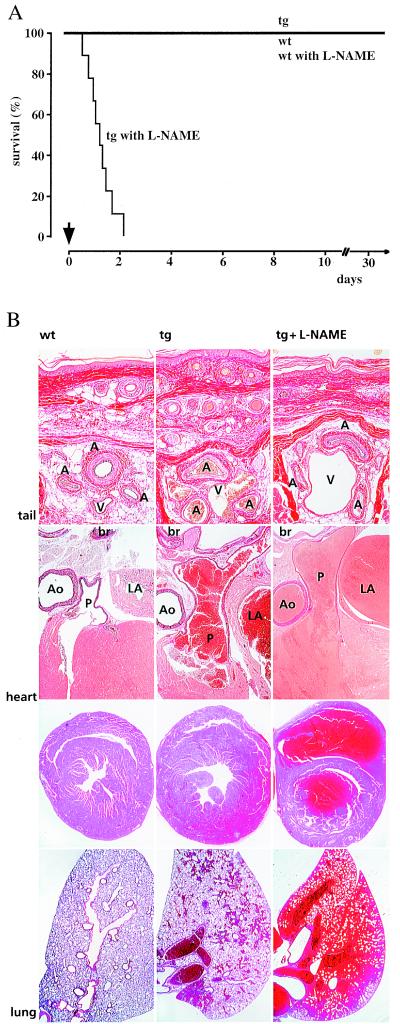Figure 3.
Treatment of conscious wild-type and transgenic mice with L-NAME. (A) Drinking water supplemented or not with L-NAME at a final concentration of 0.5 g/liter was applied ad libitum to 4 to 5-month-old male transgenic mice and wild-type control littermates (n = 9–10), resulting in a calculated dosage of approximately 40 mg of L-NAME per kg body weight and day. All nine transgenic animals died within 52 h after L-NAME application, whereas mortality did not increase in wild-type siblings and nonexposed transgenic mice. The arrow indicates the start of L-NAME application. (B) Morphological analysis of tail, heart, and lung from wild-type and transgenic animals exposed or not to L-NAME. Compared with wild-type controls, transgenic mice showed enlargement and congestion of muscular arteries and great veins. Addition of L-NAME to the drinking water resulted in vasoconstriction of tail muscular arteries and further venous congestion (top row). Elastin-van Gieson staining; A, artery; V, vein (magnification, ×125). Transgenic mice showed increased diameters of pulmonary artery, pulmonary vein, and left atrium. Ingestion of L-NAME resulted in acute left ventricular dysfunction (middle rows). Elastin-van Gieson staining (second row); Ao, aorta; P, pulmonary trunc; LA, left atrium; br, broncus (×20). Hematoxylin–eosin staining (third row, ×15). Lungs of transgenic mice showed focal pulmonary hemorrhage. Exposure to L-NAME resulted in severe pulmonary congestion and massive hemorrhage (bottom row). Hematoxylin–eosin staining (×15).

